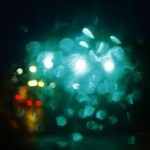
Every year around October and November we hear the disbelief in Washingtonian’s voices as they mutter about the apparent incompetence of drivers when they witness the amount of accidents on the road due to the rain. “Seriously, you’d think these people have never driven in the rain.” Or “Come on people its just rain, we get it all year long.” But in reality it can be quite challenging to drive on the first stormy days after Summer and maybe we’re just a little too overconfident in our abilities to drive in these conditions.
It really doesn’t matter how native we are to the Northwest, it’s a good idea to be aware of good driving habits for stormy weather. One of the reasons we’ve seen so many accidents around Tacoma and surrounding areas is because we had several months with almost no rain. This means that the roads were especially dangerous when it started to pour due to oil and grease from the roads mixing with the rain making it extremely slick.
The sunny days quickly vanished and the rain and wind hit hard for days without stop. The water pooled up quickly and many driving too fast were caught off guard by just how deep it was. When visibility is bad and a driver next to you hits that pool of water, you can lose visibility completely for a few seconds–enough time to do damage, especially if you’re not careful about your following distance.
First and foremost make sure that the condition of your car is ready for the coming months of inclement weather. Check your wipers, brakes, tire tread and pressure, and your defroster. Rain will quickly cause your windows to fog up so you’ll want to use your defrosters and air conditioning to quickly defog your windows when needed.
Here are some other good tips for driving in the rain:
- Slow down and allow for more travel time.
- Make sure you give yourself more distance between yourself and other vehicles.
- Turn your headlights on even during the day; it’s often only early afternoon but visibility is more like early evening.
- Stay in the middle lanes, water puddles more in the outside lanes.
- Brake earlier and with less force, it gives you more time to stop but also alerts drivers behind you that traffic is slowing
- Use your turn signals; you always want other drivers to know your intentions.
- Do not drive through moving water and go very slow when going through puddles of water especially when you’re unsure of their depth.
Following these tips and being extra aware will keep you, your passengers, and other drivers safe; it will also keep your car out of the auto body shop.
Use the quick links below to view details on our popular services:
